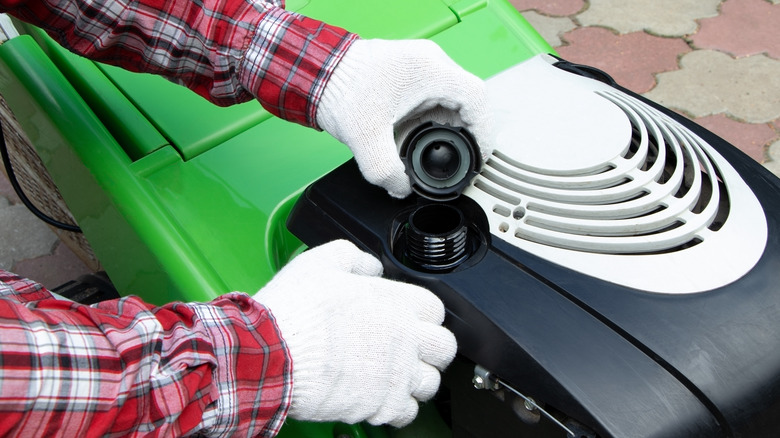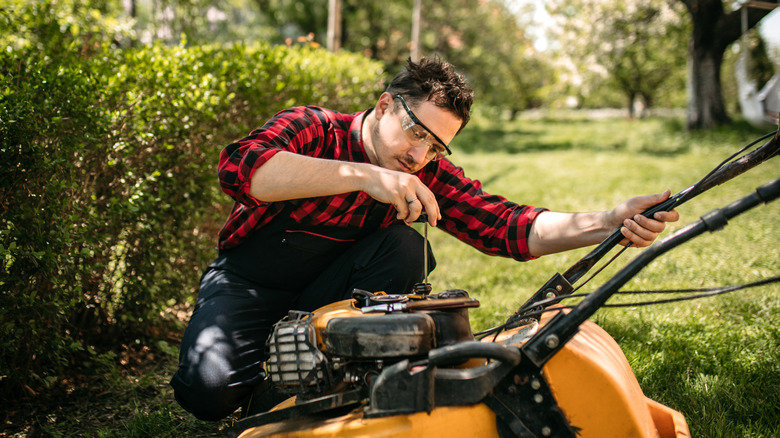In the world of lawn care and maintenance, many aspects require careful attention, one of which is the gasoline fuel that powers your lawnmower. Contrary to what many believe, this fuel isn’t meant to last indefinitely. This understanding brings us to the spotlight’s central figure — the fuel stabilizer. This is a chemical additive that protects fuel from degradation. It isn’t just another aspect of your lawnmower’s maintenance. Instead, it plays a central role, crucial to your machine’s consistent performance, longevity, and overall health. In other words, it guarantees your lawnmower’s seamless operation, providing the level of performance you’ve come to expect.
As time passes, the state of the fuel stored in your lawnmower’s engine can gradually deteriorate. This degradation process leads to the formation of a sticky, lacquer-like substance that is colloquially known as varnish. The development of this varnish is generally a result of oxidative breakdown, thermal decomposition, and the evaporation of certain volatile elements, particularly in gasoline.
Varnish build-up is a notable issue because it can cause serious harm to the engine’s components. For example, it can lead to clogged fuel injectors or carburetors, interfering with the precise control of fuel delivery. This, in turn, can result in poor engine performance, decreased fuel efficiency, and even engine damage. This is when a fuel stabilizer comes in. Let’s pull back the curtain on this vital aspect of lawnmower maintenance. We’ll also dive into the specifics of a fuel stabilizer and its pivotal role in your lawnmower’s life and performance.
The importance of fuel stabilizers for your lawnmower

At times, you may find your lawnmower refusing to start or sputtering and stalling frequently. One common cause is that the fuel left in your mower’s tank during storage has degraded. Also, the fuel in your mower’s tank can start to degrade after as little as 30 days. Adding a stabilizer to your fuel before the storage helps to ensure your lawnmower is ready to go when the mowing season arrives.
A stabilizer also helps maintain the fuel’s quality and the efficiency of your equipment. Its importance cannot be overstated— it is a preventive measure that can save you considerable effort, time, and potentially hefty repair costs. More so, fuel stabilizers are not only beneficial for periods of non-use. If you use your lawnmower infrequently, it’s still recommended to use a stabilizer.
With all of this in mind, choosing the proper fuel stabilizer for your lawnmower is crucial because it will impact the effectiveness of your machine. You should look for a fuel stabilizer designed for this particular fuel type, given that many lawnmowers today run on gasoline blended with ethanol.
It’s also key that you choose a stabilizer from a brand with a solid reputation, one recognized for its high-quality products. Moreover, the particular stabilizer you settle on should be highly rated and positively reviewed, ensuring that it has been thoroughly tested and approved by others like you. Your lawnmower’s performance may depend on this crucial choice, so choose wisely.
How to use a fuel stabilizer

So, you’ve chosen your fuel stabilizer, but what’s the best way to utilize it? The procedure is relatively straightforward, but adherence to the manufacturer’s instructions is paramount as with any product. Usually, a general guideline suggests that no more than two tablespoons of stabilizer should be added to a lawnmower.
However, this quantity can vary depending on the stabilizer’s brand and your lawnmower’s fuel capacity. Before you introduce the stabilizer, it’s crucial to first drain any old fuel from your tank. Adding a stabilizer to old or degraded fuel won’t reverse the damage done — the stabilizer works best with fresh fuel.
The sequence of adding fuel and stabilizer is also essential. Always add the stabilizer first, then fill the tank with gasoline. This sequence allows for better mixing of the stabilizer with the fuel, ensuring an even distribution throughout your tank. You shouldn’t put your lawnmower away just yet after adding stabilized fuel to the tank. Your machine should be turned on and left running for a while.
This step is essential because it enables the stabilized fuel to circulate throughout the entire fuel system, ensuring that every component receives the stabilizer’s protective effects. Remember, this process isn’t something you should do just before the mowing season. It’s best performed when you’re about to store your lawnmower for an extended period, like the winter months, to prevent fuel degradation during downtime.



